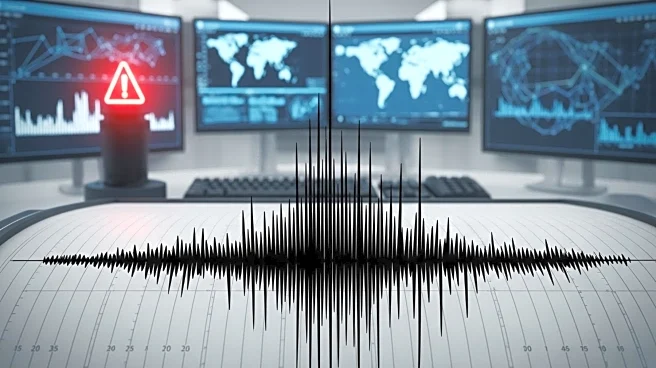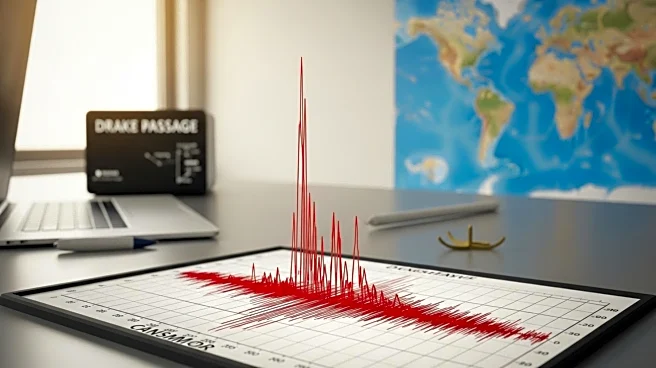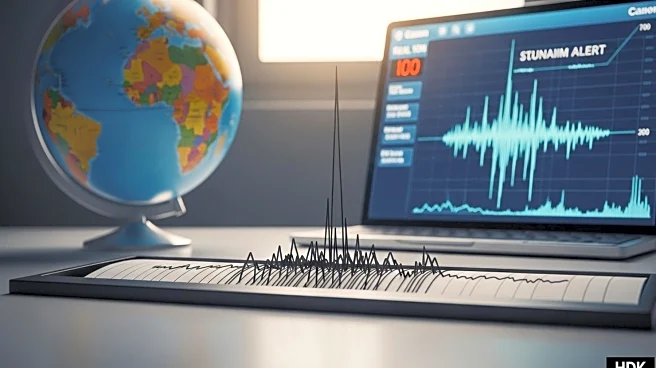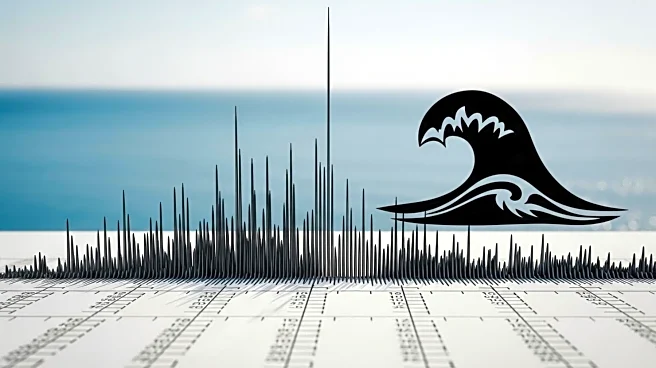What's Happening?
A significant earthquake with a magnitude of 7.8 struck the Drake Passage on Friday, as reported by the U.S. Geological Survey. The epicenter of the quake is located in the remote waters between South America and Antarctica. Due to the isolated nature of the location, there are currently no confirmed reports of damage or casualties. Authorities are actively monitoring the situation for potential tsunamis and aftershocks, and will issue alerts as necessary. The Drake Passage is known for its challenging sea conditions, including strong winds and currents, which are influenced by the Antarctic Circumpolar Current. This region is historically significant as a maritime route and remains crucial for oceanographic research and climate studies.
Why It's Important?
The occurrence of a major earthquake in the Drake Passage highlights the seismic activity in this remote region, which lies along the boundary between the Scotia Plate and the Antarctic Plate. While the area is sparsely populated, its geological activity is of interest to scientists studying tectonic movements and ocean circulation. The potential for tsunamis, although currently unconfirmed, could have implications for nearby regions if alerts are issued. The event underscores the importance of monitoring seismic activity in remote areas, which can provide valuable data for understanding global geological processes and their impact on oceanic and polar ecosystems.
What's Next?
Authorities will continue to monitor the Drake Passage for any signs of aftershocks or tsunamis. Updates and alerts will be issued as necessary to ensure safety and preparedness in potentially affected areas. The scientific community may use this event to further study the tectonic activity in the region, contributing to broader research on seismic patterns and their implications for oceanographic and climate studies. The remote nature of the Drake Passage means that while immediate human impact is minimal, the data collected could have long-term benefits for understanding geological and environmental dynamics.
Beyond the Headlines
The earthquake in the Drake Passage serves as a reminder of the complex interactions between tectonic plates and their role in shaping the Earth's geological landscape. The region's remote location and challenging sea conditions make it a unique area for scientific exploration, offering insights into the health of polar ecosystems and global ocean circulation. The event may prompt further research into the seismic activity of the area, contributing to a deeper understanding of the Earth's geological processes and their impact on climate and environmental studies.












